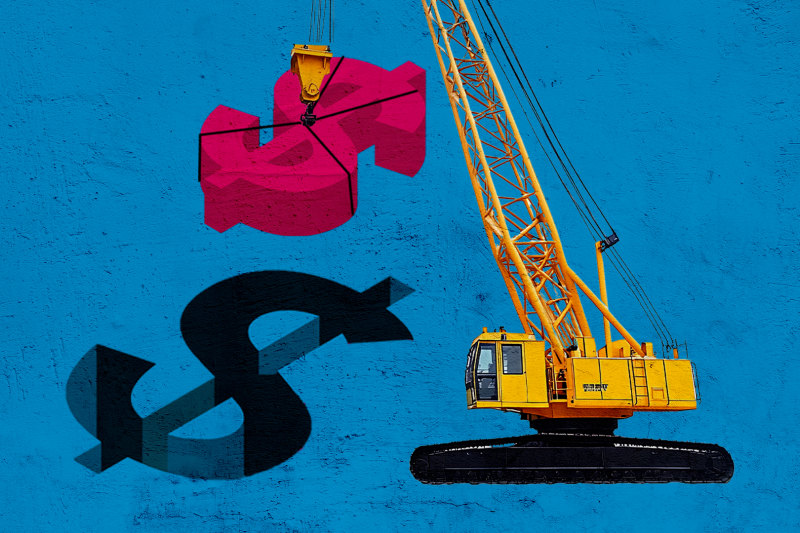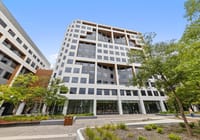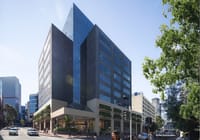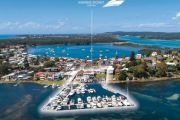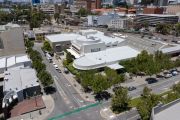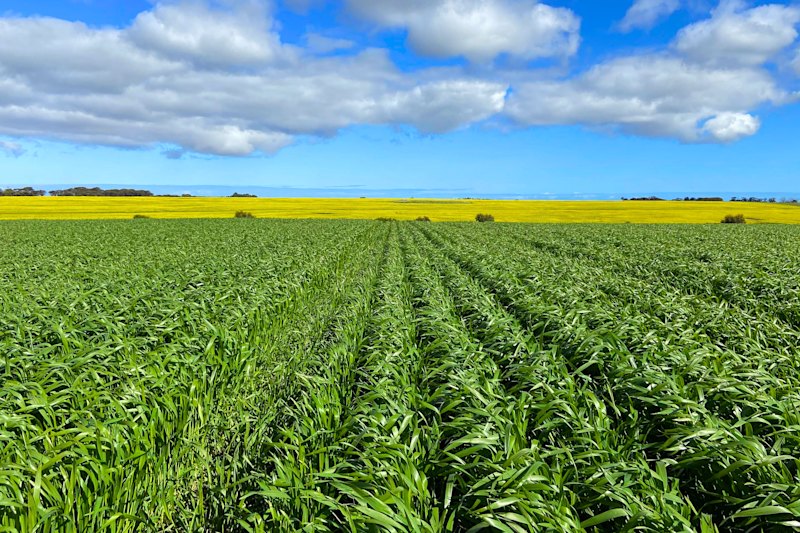
Oversupply, weaker tourism growth hits Australian hotels
Hotel owners and operators can be forgiven for having more modest expectations for the accommodation sector in 2020, after a glut of new openings and weaker than expected growth in international visitor numbers hit overall performance in 2019.
The past year ended with the key hotel performance benchmark – revenue per available room or revPAR – down about 3 per cent nationally according to hotel analysts STR, while the total number of hotel rooms rose above 300,000 across 5600 properties, with plenty more to come.
Hotel tycoon Jerry Schwartz stood up theatrically in May at a major hotel conference, urging his operators not to cut room rates, but according to Trent Fraser, Asia Pacific CEO of franchise giant Choice Hotels the additional inventory in the capital cities made conditions “quite challenging” in 2019.
Choice, which added 21 hotels to its 200-hotel strong Australia and New Zealand network in 2019, its biggest expansion in five years, will finish the year with revPAR growth “just in positive territory”, said Mr Fraser.
“Although it’s below what we expected to achieve, we feel good compared to the market,” he says.
It’s not just the glut of new rooms, (many of them at the luxury end of the market), but also expectations of more moderate growth in international tourist numbers (excacerbated this summer by the impact of the devastating East Coast fires), that has Choice and others in the sector bracing for a more challenging year in 2020.
The latest inbound arrivals forecast from Tourism Australia is for 4.7 per cent growth in fiscal 2020 down from 5.8 per cent predicted in earlier forecasts.
“Given that actual FY19 growth in inbound arrivals (3.1 per cent) recorded well below the forecast growth for the same period (5.9 per cent), we expect that FY2020 will be a similar story of not meeting growth expectations,” said CBRE Hotels national director Wayne Bunz.
“This is driven by a combination of factors including subdued growth from China as well as economic and political uncertainty within European source markets,” he says.
The good news, said Mr Fraser, is that India visitor numbers are up about 17 per cent and Japan 6 per cent, which balances out the slowdown in China to an extent.
“We still expect 2020 to be a positive year.
“Our industry and our economy is resilient enought to absorb the new supply. It will just take a little bit of time (around 12 months) to catch up.”
The surge in new hotel openings combined with rising numbers of Airbnb offerings has forced hoteliers to do things “a bit smarter” Mr Fraser said.
Choice has also deployed its specialist revenue managers to help those hotels – many of them in regional Australia – plug gaps in their bookings.
“We’ve been telling our stakeholders to really focus on the customer…yes managing inventory is important … but what is important is what happens when the guest gets to the hotel. That’s the measure of success.”
“Personalisation and loyalty are very important. No one wants to be treated like a number. Hotel operators need to understand their guests preferences, their likes and dislikes.”
Also important in 2020 – as it has been in for some time -will be efforts by the big hotel chains to increase their proportion of direct bookings, cutting out the hefty fees charges by online travel agents like Expedia and Booking.com, even as they claim to deliver a net benefit to hotels bottom lines.
Marriott’s Australia, New Zealand and Pacific boss Sean Hunt said the hotel giant had a “huge year” in terms of new openings (including the return of the Ritz-Carlton in Perth) and signings.
The company is well ahead of its goal of having 50 hotels and 10,000 rooms in the region either open or in development by 2020.
“We have exciting openings in the pipeline this year including a Luxury Collection Hotel in Hobart, the W in the Melbourne CBD and a Marriott in Docklands. Our growth is very, very strong.”
“We’ve had a great year overall in terms of hotel performance. Largely our hotels outperform on revPAR and are market leaders.
Mr Hunt said he was not concerned about the “dips in revPAR” which occured in Sydney, Melbourne and Brisbane in the second half of the year.
“The influx of development in major cities leads to dips as new supply comes in. But new hotels also induce demand and bring in new business, including corporate visitors.
“International chains like Marriott tend to outperform the market due to our strong distribution and loyalty programs. We have 140 million members globally.
He added, that countering the slowdown in Chinese visitor growth, a lot of American tourists were coming through its properties, supported by increasing airline capacity and the weaker Australian dollar,
“The Chinese market is still pretty strong, spending $12 billion a year, with annual growth of 6 per cent.
“Six per cent is pretty good when the market is flat.” Mr Hunt said.
“We’ve also seen quite a surge in inquires and bookings from the Indian market, which can’t be ignored. India has a growing middle class and a big population. We have over 100 hotels in India. They know Sheraton, Westin, Marriott and they have a propensity for luxury.”
Fantastic for tourism
Simon McGrath, who runs the country’s largest hotel operator, Accor, said 2020 was also looking good despite the markets “commercial sensitivity” to new product.
“The supply that came onboard in 2019 and that’s coming in 2020 looks fantastic for tourism. We’ve also got new stadiums and other infrastructure,” Mr McGrath said.
“We had concerns about Perth and Brisbane, but a very positive level of activity is starting to come through in those markets.”
Mr McGrath said Accor saw opportunities to open new Novotels and Pullmans in Australia. “We also like to bring in new brands to Australia like Movenpick, Swissotel and Fairmount.”
On the investment front, total transactions will come in at $1.69 billion for 2019 according to CBRE, matching 2018 figures, but below 10-year historical averages.
“The lower sales volumes reflect a year of limited transaction opportunities as owners look to hold their assets over the medium-term,” said Mr Bunz.
Instead, there has been a pick up in regional hotel acquisitions, which he said reflected investor appetite for better value and higher yields and limited opportunities currently within the key CBD markets.
Threat of oversupply
Major deals over the year included the $300 million sale of Accor portfolio of 23 hotels to fund manager iProsperity, Salter Brothers’ acquisition of the NEXT Hotel in Brisbane for $150 million and Singapore-based serviced apartment giant The Ascott Limited teaming up with Middle East sovereign wealth fund the Qatar Investment Authority to buy a 252-room hotel in what will be North Sydney’s tallest tower for $202 million.
While values and yield in the investment market remains will remain well supported given low rates and a scarcity of buying opportunities, Mr Bunz also anticipated a tougher trading environment in 2020.
“A potential threat of oversupply in some markets will continue to affect revPAR levels.
“Markets such as Melbourne are adjusting to new supply, and this is a challenge that will intensify over the short-term period,” he said.
In response, Mr Bunz said hoteliers would need to be proactive and innovative while investors with older assets will come under pressure to renovate as new stock hits the market.
It’s a view shared by Gus Moors, head of hotels at Colliers International.
“The consideration that these investors will need to grapple with is whether the new supply affects them directly or indirectly, and therefore what degree of renovation they should undertake in response,” he said.
“A defensive refurbishment seeks to stop the decline and enables the property to hold its current position, while an offensive refurbishment aims to bring the hotel to a new standard that enables it to grow profitability into the future.”
Hotel start-up Veriu, which has a growing pipeline of east coast projects bucked the trend of falling revPAR in 2019. Chief executive Zed Sanjana is bullish about 2020, despite the boost to supply.
“If we were concerned about over supply, we wouldn’t be signing eight-to-10 new hotel lease deals a year.
“These lock in our expectations of market performance three years in advance of the hotel being constructed and opening,” said Mr Sanjana.
He said new supply was a very healthy and necessary thing for the industry to replenish the number and quality of hotel rooms in the market.
“New supply growth will typically drive out the bottom end of the market, hotels 15 years old or more which either require major reinvestment or redevelopment into other uses.”
Veriu’s top picks for 2020 in terms of growth are Brisbane, Adelaide and Hobart. Melbourne and Sydney are expected to remain steady as they absorb much of the new supply.


